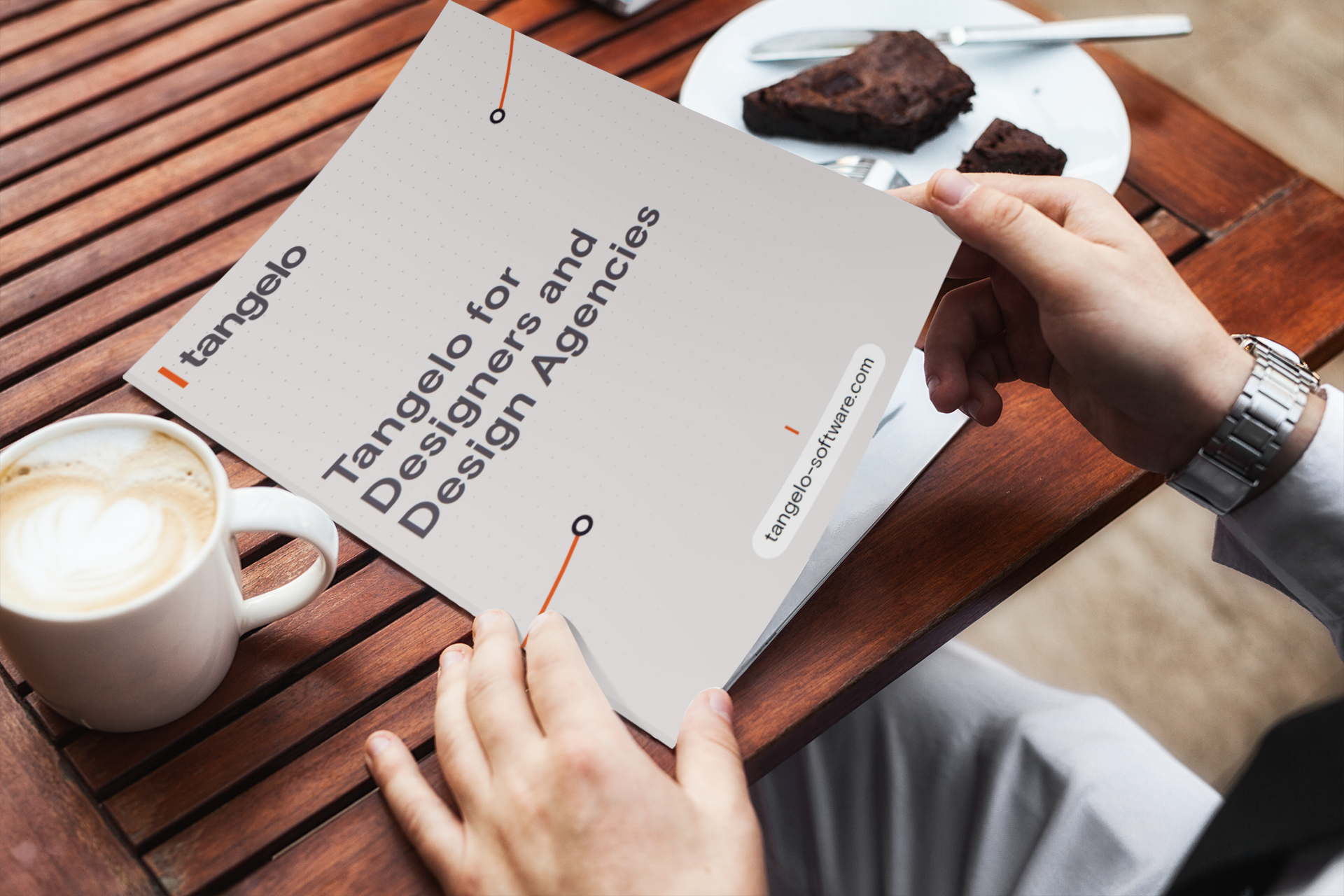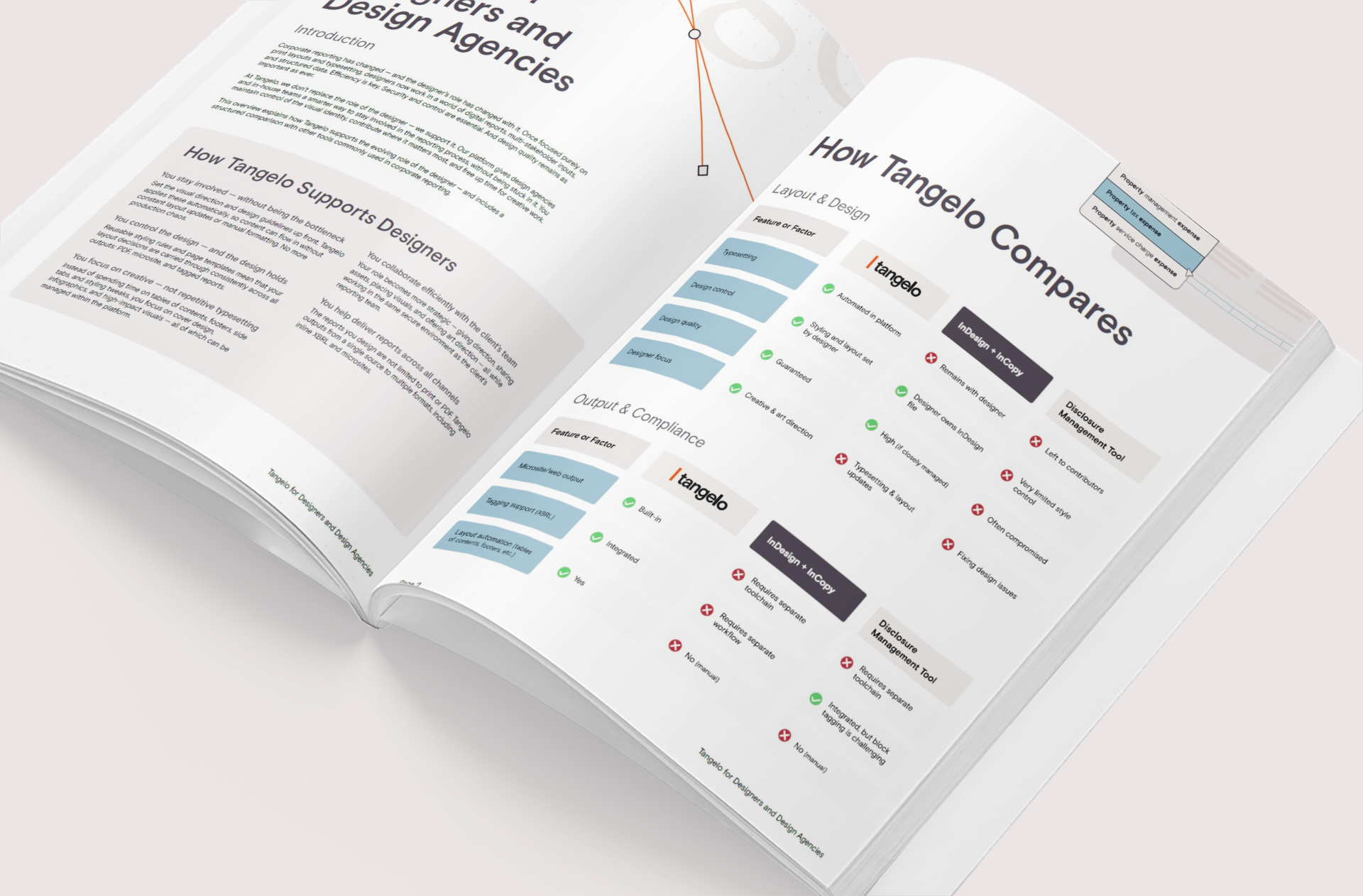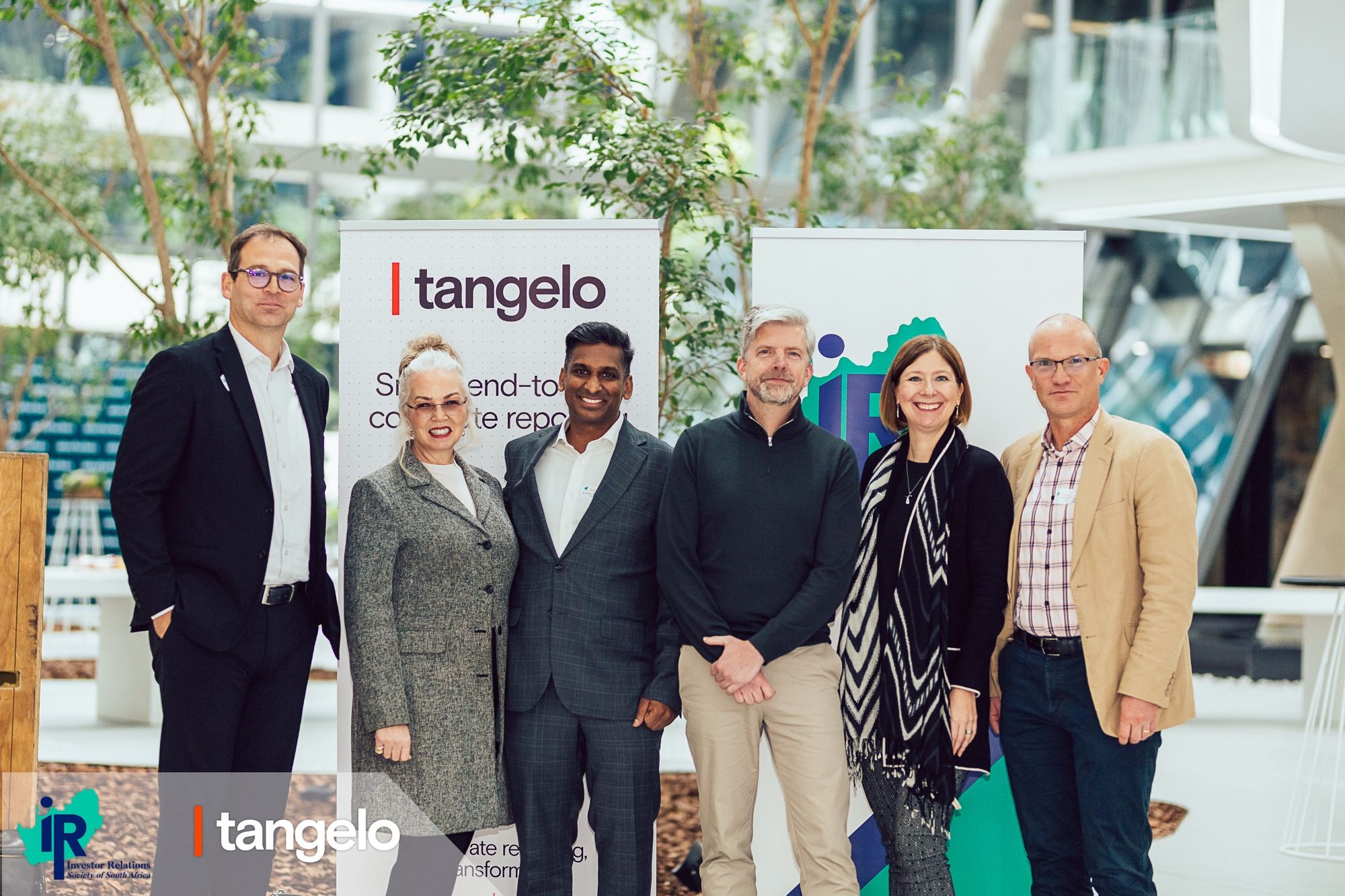The Changing Role of the Designer in Annual Reporting

Annual reports and increasingly, sustainability reports have always been creative showcases. For decades, designers and agencies brought these documents to life through layout, typography, and visual storytelling. But the context in which these reports are created and consumed has evolved gradually, but significantly.

What once was a handcrafted print production is now a multi format, multi stakeholder deliverable: a downloadable PDF, a few printed copies for key audiences, and increasingly a dynamic online version for broader stakeholder engagement. At the same time, today’s reporting landscape demands stricter security, tighter process controls, and greater transparency. Structured sustainability reporting based on standards like the ESRS, the ISSB Standards, and their local adoptions, as well as electronic reporting in XBRL format, all add complexity. The number of contributors has grown, the page count has risen, and the expectations around accuracy and accountability have never been higher. Design hasn’t become less important but the role of the designer has changed.
Download: Tangelo for Design Agencies
See how we support designers and agencies with smarter, more efficient reporting workflows. Download the overview including a detailed comparison with other tools.
From layout bottleneck to efficient collaboration
InDesign once the go to production environment no longer fits the needs of today’s corporate reporting process. What used to be a one designer task is now a collaborative, fast paced process involving dozens of contributors, tight deadlines, and regulatory scrutiny. The single designer bottleneck isn’t just inefficient it’s unworkable. Even "upgraded" approaches using InCopy fall short. These setups don’t support integrated tagging for electronic reports (such as ESEF or UKSEF), don’t offer proper version control or security, and weren’t built with real collaboration in mind. And bolted on microsite production or separate tagging tools only complicate things further. There’s a clear need for secure, integrated collaboration platforms and a different way of working.
Designing smarter, not harder
For many companies, the PDF remains the primary format for the annual or sustainability report. But how it gets produced has changed. Instead of building layouts manually and responding to endless revision rounds, designers today are being asked to work more efficiently guiding the visual identity, ensuring consistency, and collaborating directly with clients in a more controlled and secure environment.
The role is no longer about executing each layout. It’s about enabling consistency across formats, contributing to a smoother workflow, and freeing up time for the creative work that matters most.
Designers are being asked to:
- Set design direction early on, using reusable templates and style guides
- Work within efficient workflows that reduce manual layout iterations
- Collaborate directly with clients and content teams, often within the same platform
- Ensure that designs carry through consistently across PDF, microsite, and XBRL formats
It’s not always an easy shift especially for designers trained in traditional print workflows. But it’s a necessary one. In a multi channel reporting process, efficiency, structure, and control are now just as important as creativity.
Less production, more creativity
For agencies stretched thin on resources, this shift brings relief. Less time spent pushing pixels or updating layouts manually more time to focus on creative strategy, visual storytelling, and brand consistency. The creative process remains central but it now lives within a framework that supports collaboration, security, efficiency, compliance, and delivery across multiple formats.
Let’s get in touch
We are always happy to connect with agencies looking to stay creative without being stuck in production. Visit our contact page to reach out.
Latest resources
CSRD Day 2025 showed one thing clearly: sustainability is here to stay.
CSRD Day shows sustainability progress continues despite delays and shifting regulations.
Tangelo achieves renewed ISAE 3402 Type II and SOC 2 Type II certifications
Tangelo renews ISAE 3402 and SOC 2 certifications, strengthening client trust.
